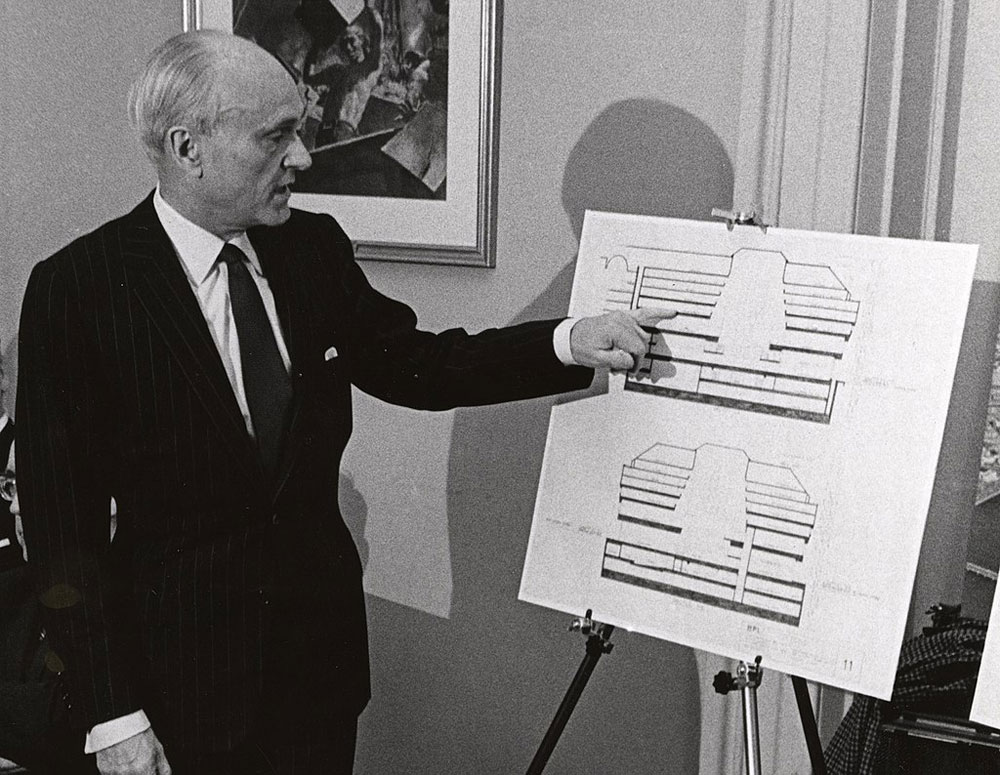
December 1, 2020; Curbed
Architect Philip Johnson’s name is immortalized on the walls of New York’s Museum of Modern Art, which may not be surprising since he was the founding director of MoMA’s Architecture and Design department. Nevertheless, he was also a fascist and a white supremacist, says the Johnson Study Group, which has sent an open letter to the museum demanding his name be removed wherever it appears on a building or in conjunction with a staff position. They also asked donors, including Agnes Gund and Peggy Rockefeller, to reconsider their support of the institution.
Seven architects scheduled to be shown in an upcoming MoMA exhibit, Reconstructions: Architecture and Blackness in America, have signed on, adding their name to 24 others prominent in the design and architecture worlds. The group also includes some anonymous members.
The letter issues a call to white allies to take the work as their own. “There is a role for Johnson’s architectural work in archives and historic preservation,” the letter’s authors write. “However, naming titles and spaces inevitably suggests that the honoree is a model for curators, administrators, students, and others who participate in these institutions.”
Sign up for our free newsletters
Subscribe to NPQ's newsletters to have our top stories delivered directly to your inbox.
By signing up, you agree to our privacy policy and terms of use, and to receive messages from NPQ and our partners.
The webpage for the Reconstructions exhibition reads, in part,
Centuries of disenfranchisement and race-based violence have led to a built environment that is not only compromised but also, as the critic Ta-Nehisi Coates contends, “argues against the truth of who you are.” These injustices are embedded in nearly every aspect of America’s design—an inheritance of segregated neighborhoods, compromised infrastructures, environmental toxins, and unequal access to financial and educational institutions.
The Johnson Study Group first convened last summer as designers and architects were at work on their pieces for “Reconstructions” and as other architectural institutions released anti-racism statements. It made sense to look at MoMA’s own record, and it quickly became apparent that Johnson had held sway over the museum’s choices about who would be exhibited, and also over whose work would be taught at the Harvard Graduate programs in design.
“We’re interested in dismantling [racist systems] piece by piece,” says Bryan C. Lee, a signee and the organizer of the Design Justice platform. “To do that, you have to really understand which threads to pull in order to unravel the ideology behind it, and Philip Johnson pulls a lot of threads.”—Ruth McCambridge











